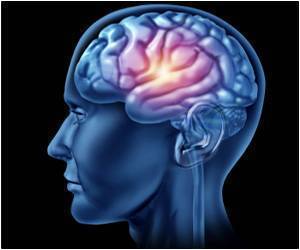A marker for Alzheimer's disease rises and falls in the spinal fluid in a daily pattern that echoes the sleep cycle, researchers at Washington University School of Medicine in St.

In the new study, scientists report that the normal highs and lows of amyloid beta levels in the fluid that surrounds the brain and spinal cord begin to flatten in older adults, whose sleep periods are often shorter and more prone to disruption. In older adults with brain plaques linked to Alzheimer's disease, the ebb and flow is eradicated, and amyloid beta levels are close to constant.
The study is now online in Archives of Neurology.
"In healthy people, levels of amyloid beta drop to their lowest point about six hours after sleep, and return to their highest point six hours after maximum wakefulness," says Randall Bateman, MD, associate professor of neurology. "We looked at many different behaviors, and the transitions between sleep and wakefulness were the only phenomena that strongly correlated with the rise and fall of amyloid beta in the spinal fluid."
Bateman's laboratory conducted the study in partnership with Washington University's Sleep Medicine Center.
"We've known for some time that significant sleep deprivation has negative effects on cognitive function comparable to that of alcohol intoxication," says Stephen Duntley, MD, professor of neurology and director of the center. "But it's recently become apparent that prolonged sleep disruption and deprivation can actually play an important role in pathological processes that underlie diseases. This connection to Alzheimer's disease isn't confirmed yet in humans, but it could be very important."
Advertisement
Scientists studied three sets of subjects: a group age 60 and older who tested positive for the presence of amyloid beta plaques in the brain; a group in the same age range who did not have plaques; and a group of healthy persons age 18-60.
Advertisement
In the group with brain plaques, amyloid beta levels were close to constant. But in the other two groups, the levels regularly rose and fell in a snakelike, sinusoidal pattern. The highs and lows of this pattern were much more pronounced in younger subjects.
Lead author Yafei Huang, PhD, statistical data analyst, reviewed the subjects' activities during the monitoring period at 30-second intervals. She grouped them into categories such as eating or drinking, watching television, using the bathroom, and using a computer or text messaging.
None of these activities could be closely correlated with changes in amyloid beta levels. But peaks in sleep and wakefulness, assessed both by videotape and by records of patients' brain activity levels, consistently occurred before the peaks and valleys of amyloid beta levels.
Researchers are currently testing if deliberate interruption of sleep in young healthy subjects disrupts the normal daily decrease in spinal amyloid beta.Scientists may follow these studies with tests of whether sleeping pills and other interventions that improve sleep help maintain the rise and fall of amyloid beta in the spinal fluid.
"It's still speculation, but there are tantalizing hints that better sleep may be helpful in reducing Alzheimer's disease risk," says Duntley. "We know from a number of studies that exercise enhances sleep, and research also has shown that exercise is associated with decreased risk of Alzheimer's. Sleep might be one link through which that effect occurs."
Source-Eurekalert













